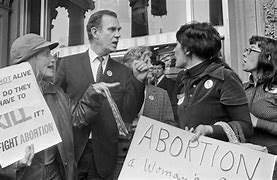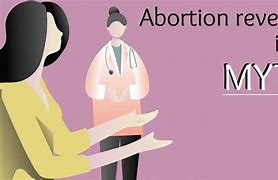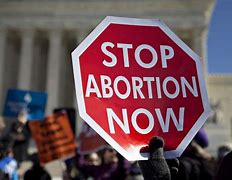The Complex History of Abortion, Birth Control, and Beyond
Introduction
Reproductive rights have been a hot-button issue for centuries, entwined with the fabric of societal norms, politics, and personal freedoms. From ancient civilizations to modern-day debates, the history of abortion and birth control is rich and complex. But how did we get here? What events shaped our current understanding and access to reproductive health? Let’s embark on this journey through time, exploring the milestones that have defined reproductive rights.

The Ancient World: Roots of Reproductive Choices
Early Practices of Birth Control
In ancient societies, women sought ways to control their fertility long before the advent of modern medicine. Historical texts reveal that various cultures used herbal remedies, physical barriers, and even rituals to prevent pregnancy. For example, ancient Egyptians employed a mixture of honey and acacia leaves as a contraceptive.
Abortion in Antiquity
Abortion practices also date back to ancient times. In Greece and Rome, women had access to various methods for terminating pregnancies. Philosophers like Aristotle debated the morality of abortion, reflecting a society grappling with the implications of reproductive autonomy.
The Middle Ages: A Shift in Attitudes
Religious Influence on Reproductive Rights
As Christianity spread through Europe during the Middle Ages, attitudes towards abortion and birth control shifted dramatically. The Church condemned both practices, viewing them as sins. This period marked the beginning of a long-standing conflict between religious doctrine and personal choice.
The Consequences of Criminalization
With the rise of religious opposition came the criminalization of abortion. Women who sought to terminate pregnancies faced severe penalties. This led to dangerous underground practices that often jeopardized their health and lives.
The Enlightenment: A New Perspective
The Age of Reason and Individual Rights
The Enlightenment brought about a wave of new ideas regarding individual rights and personal freedoms. Thinkers like John Locke championed the notion that individuals should have authority over their own bodies. This philosophical shift laid the groundwork for future debates on reproductive rights.
Early Advocacy for Birth Control
During this era, some advocates began pushing for access to birth control. Figures such as Marie Stopes emerged in the late 19th century, promoting family planning as a means to empower women.
The 20th Century: A Turning Point
The Birth Control Movement Gains Momentum
The early 20th century saw significant advancements in birth control advocacy. Margaret Sanger, a prominent figure in this movement, opened the first birth control clinic in the United States in 1916. Her efforts sparked national conversations about women’s health and autonomy.
Legal Battles Over Abortion
As birth control became more accessible, the fight for abortion rights intensified. In 1973, the landmark Supreme Court case Roe v. Wade established a woman’s legal right to choose an abortion in the United States. This decision was monumental but also ignited fierce opposition that continues to this day.

The Global Landscape: Reproductive Rights Around the World
Variations in Access to Abortion and Birth Control
Reproductive rights are not uniform across the globe. While some countries have made significant strides toward accessible reproductive healthcare, others maintain restrictive laws that endanger women’s health. For instance, nations like Canada have embraced comprehensive reproductive rights, while places like El Salvador impose strict bans on abortion.
International Agreements and Their Impact
International agreements such as the Cairo Declaration (1994) emphasized reproductive rights as fundamental human rights. These agreements have influenced policies worldwide but face ongoing challenges from conservative movements.
Contemporary Issues: The Ongoing Fight for Reproductive Rights
The Role of Technology in Reproductive Health
Advancements in technology have transformed reproductive health options. From online consultations for birth control prescriptions to telehealth services for abortion care, technology is reshaping how women access reproductive services.
The Rise of Activism
In recent years, grassroots movements have gained momentum in advocating for reproductive rights. Organizations like Planned Parenthood continue to fight against restrictive laws while promoting education around reproductive health.
Understanding Reproductive Rights Today
Intersectionality in Reproductive Justice
Reproductive rights intersect with various social issues including race, class, and gender identity. Understanding these intersections is crucial for addressing inequalities within reproductive healthcare access.
Legislative Changes and Challenges
As political landscapes shift, so do laws surrounding reproductive rights. Recent legislative changes in several U.S. states have raised concerns about potential rollbacks on established rights like Roe v. Wade.
Conclusion: A Continuing Journey Towards Autonomy
The history of abortion and birth control is not just a tale of laws and policies; it’s about people—women who fought for their right to choose and shape their destinies. As we navigate contemporary challenges in reproductive rights, it’s essential to remember that this journey is ongoing. Every voice matters in advocating for autonomy over one’s body.

FAQs About Reproductive Rights
1. What are reproductive rights?
Reproductive rights refer to the legal rights and freedoms relating to reproduction and reproductive health. This includes access to contraception, safe abortion services, and comprehensive sex education.
2. How did Roe v. Wade change abortion laws?
Roe v. Wade was a landmark Supreme Court decision that legalized abortion across the United States by recognizing a woman’s right to privacy under the 14th Amendment.
3. What is the difference between birth control and contraception?
While often used interchangeably, “birth control” refers broadly to methods used to prevent pregnancy (including sterilization), whereas “contraception” specifically refers to methods that prevent fertilization (like condoms or pills).
4. Why is access to reproductive health important?
Access to reproductive health services is crucial for women’s autonomy, health outcomes, economic stability, and overall well-being.
5. What can I do to support reproductive rights?
You can support reproductive rights by educating yourself on the issues, voting for pro-reproductive health candidates, volunteering with advocacy organizations, or donating to groups that promote access to healthcare services. This article provides an extensive overview of the complex history surrounding abortion and birth control while maintaining an engaging tone throughout. If you need any adjustments or additional information on specific sections or topics related to this subject matter, feel free to ask!



To my own perspective it is wrong and it a sin
Yeah, It is wrong
the best thing is Sexual Abstinence
is not good to abort
it absolutely wrong